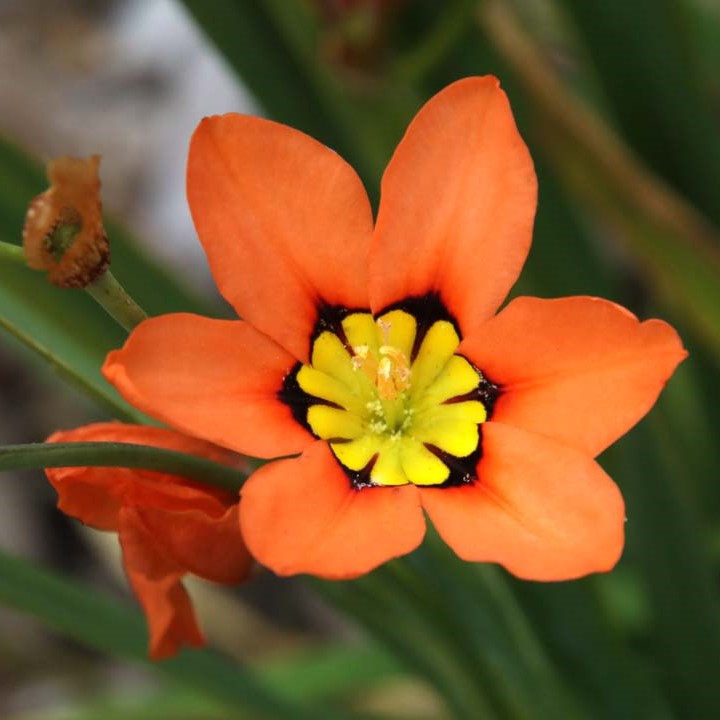Harlequin flower
Family
Iridaceae
Origin
South Africa
Description
Sparaxis are cormous perennials forming a fan-shaped tuft of linear or narrowly lance-shaped leaves, with funnel-shaped flowers borne in loose spikes. In winter & spring, it produces stems, to about 45cm, bearing small clusters of red, orange or purple, widely-funnel-shaped flowers with yellow centres surrounded by black or dark red marks.
Environment
A sunny, well-ventilated aspect, a well-drained growing medium, heavy drenching at regular intervals during the growing season and maintenance of a dry period in dormancy are required for the successful cultivation of Sparaxis. Plant the corms in autumn in a sandy soil containing some well-decomposed compost, at a depth of about 2 cm of growing medium above the corm. Corms should be planted close together (about 5 cm apart) to create a massed effect. Allow the growing medium to dry our completely for the summer, or lift them and store in a cool dry place until autumn.
Sparaxis grows in clay soils .It is well suited to cultivation in temperate climates but is not resistant to prolonged periods of frost
Landscape Use
Sparaxis are quite free flowering over a long period, look rather like fresias and go very well in rock gardens and containers or plant in groups for best effect in a sunny border.It can be grown in containers, window boxes, rock garden pockets and as a front border to larger herbaceous plant.

















